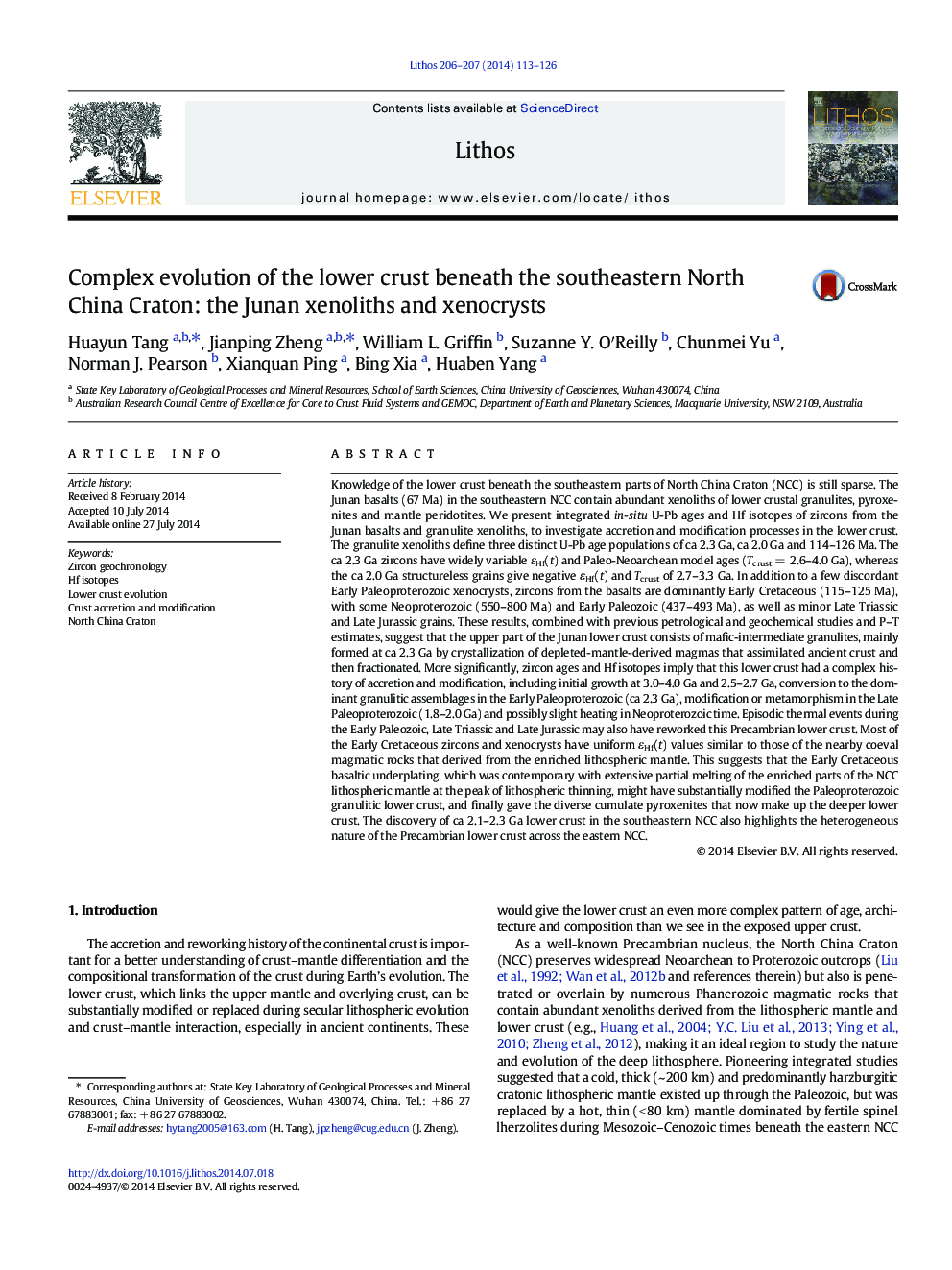| کد مقاله | کد نشریه | سال انتشار | مقاله انگلیسی | نسخه تمام متن |
|---|---|---|---|---|
| 4715942 | 1638672 | 2014 | 14 صفحه PDF | دانلود رایگان |
• New U-Pb ages and Hf-isotopes of zircons from the Junan basalts and their granulite xenoliths.
• The secular accretion and modification of the lower crust were discussed.
• The lithosphere architecture of the Junan region was suggested.
• Precambrian lower crust was heterogeneous across the NCC.
Knowledge of the lower crust beneath the southeastern parts of North China Craton (NCC) is still sparse. The Junan basalts (67 Ma) in the southeastern NCC contain abundant xenoliths of lower crustal granulites, pyroxenites and mantle peridotites. We present integrated in-situ U-Pb ages and Hf isotopes of zircons from the Junan basalts and granulite xenoliths, to investigate accretion and modification processes in the lower crust. The granulite xenoliths define three distinct U-Pb age populations of ca 2.3 Ga, ca 2.0 Ga and 114–126 Ma. The ca 2.3 Ga zircons have widely variable εHf(t) and Paleo-Neoarchean model ages (Tcrust = 2.6–4.0 Ga), whereas the ca 2.0 Ga structureless grains give negative εHf(t) and Tcrust of 2.7–3.3 Ga. In addition to a few discordant Early Paleoproterozoic xenocrysts, zircons from the basalts are dominantly Early Cretaceous (115–125 Ma), with some Neoproterozoic (550–800 Ma) and Early Paleozoic (437–493 Ma), as well as minor Late Triassic and Late Jurassic grains. These results, combined with previous petrological and geochemical studies and P–T estimates, suggest that the upper part of the Junan lower crust consists of mafic-intermediate granulites, mainly formed at ca 2.3 Ga by crystallization of depleted-mantle-derived magmas that assimilated ancient crust and then fractionated. More significantly, zircon ages and Hf isotopes imply that this lower crust had a complex history of accretion and modification, including initial growth at 3.0–4.0 Ga and 2.5–2.7 Ga, conversion to the dominant granulitic assemblages in the Early Paleoproterozoic (ca 2.3 Ga), modification or metamorphism in the Late Paleoproterozoic (1.8–2.0 Ga) and possibly slight heating in Neoproterozoic time. Episodic thermal events during the Early Paleozoic, Late Triassic and Late Jurassic may also have reworked this Precambrian lower crust. Most of the Early Cretaceous zircons and xenocrysts have uniform εHf(t) values similar to those of the nearby coeval magmatic rocks that derived from the enriched lithospheric mantle. This suggests that the Early Cretaceous basaltic underplating, which was contemporary with extensive partial melting of the enriched parts of the NCC lithospheric mantle at the peak of lithospheric thinning, might have substantially modified the Paleoproterozoic granulitic lower crust, and finally gave the diverse cumulate pyroxenites that now make up the deeper lower crust. The discovery of ca 2.1–2.3 Ga lower crust in the southeastern NCC also highlights the heterogeneous nature of the Precambrian lower crust across the eastern NCC.
Journal: Lithos - Volumes 206–207, October 2014, Pages 113–126
